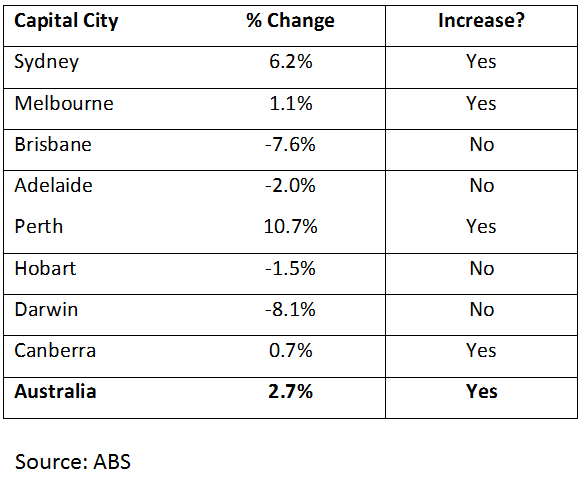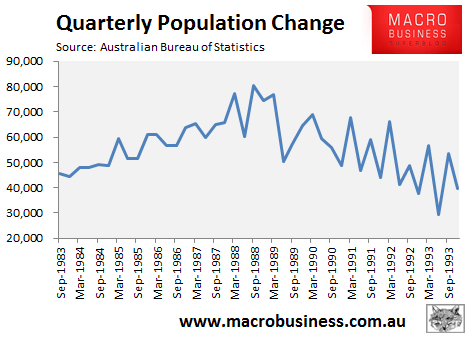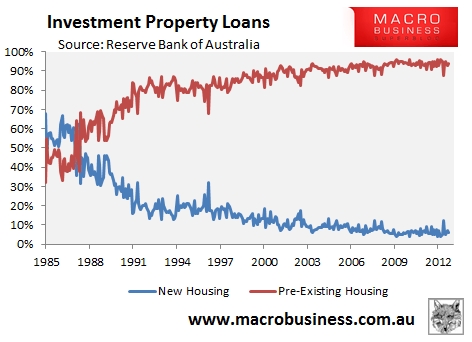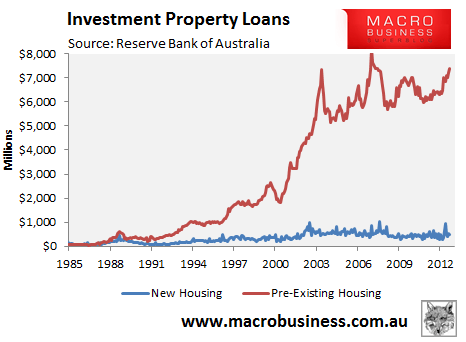
The Real Estate Institute of Australia (REIA) has today issued a media release (below) defending negative gearing and lobbying against any changes. Let’s examine the REIA’s arguments:
The Real Estate Institute of Australia President, Mr Peter Bushby, says the Government should retain negative gearing for property investment in its current form.
“Recent chatter suggesting there are changes in the wind is extremely concerning and would negatively impact on the supply of housing and the level of rents in an already tight rental market,” says Mr Bushby, speaking in the lead up to next week’s Federal Budget.
“It would adversely affect the most disadvantaged in our community, who are caught in the rental trap while facing a long wait for social housing.”
“We need to remember what happened in 1985 when the Hawke Government abolished negative gearing for property, only to bring it back in 1987. During that period rents increased by 57.5% in Sydney, by 38.2% in Perth and by 32.0% in Brisbane.”
It’s important to note that negative gearing was never “abolished”. Rather, from July 1985 the government quarantined negative gearing interest expenses on new transactions. As a result, investors could only claim interest expenses against rental income, not other income. The old rules were restored in September 1987 after successful lobbying by the real estate lobby who wrongly claimed that the rule changes had caused rents to skyrocket.
Predictably, the REIA has recycled the myth that the “abolition” of negative gearing between July 1985 and September 1987 caused a rental crisis. So what does the data actually tell us? Well, according to the Australian Bureau of Statistics (ABS), inflation-adjusted rents rose in four capital cities and fell in four capital cities over the period that negative gearing was temporarily “abolished” (quarantined):

If it was true that the abolition of negative gearing caused rents to rise, as the REIA claims, shouldn’t rents have risen Australia-wide since negative gearing affects all rental markets equally?
Moreover, rental growth over the period that negative gearing was quarantined was not unprecedented, with rents growing by a greater amount on an annual basis in late 1982 and early 1983.
In any event, I suspect rising population growth in the mid-to-late-1980s played the major role in increasing rents nationally, not changes to negative gearing tax rules:

Back to the REIA:
“It is important to know that the 2010 Henry Review stated that any changes to negative gearing arrangements should only occur after reforms to the supply of housing and to housing assistance,” added Mr Bushby.
“Current arrangements, in addressing the supply of rental accommodation, are complementary to the Government’s goal of increasing the supply of rental property.”
“Negative gearing could be the difference between investing or not in rental housing in a subdued market, as is the case at present. Any tweaking to the current taxation arrangements could tip the balance against property investment.”
I love the way that the REIA uses the Henry Review recommendations to defend making changes to negative gearing, but conveniently ignores the same Review’s recommendation of a broad-based land tax.
As to arguments over supply, Reserve Bank of Australia (RBA) data clearly shows that the overwhelming majority of investors – over 90% – buy pre-existing dwellings, not new dwellings, and that the proportion of investors buying new dwellings has fallen considerably since negative gearing was re-introduced in September 1987 (see next chart).

Moreover, the amount of investor funds going into new housing has barely shifted in 25 years:

Because investors primarily purchase pre-existing dwellings, negative gearing in its current form simply substitutes homes for sale into homes for let. As such, negative gearing has done little to boost the overall supply of housing or improve rental supply or rental affordability.
In the event that negative gearing was once again quarantined and a proportion of investment properties were sold, who does the REIA think they would sell to? That’s right, renters. In turn, those renters would be turned into owner-occupiers, thereby reducing the demand for rental properties, leaving the rental supply-demand balance unchanged.
Ultimately, negative gearing has few policy merits. It does little to boost supply, yet the additional demand from tax subsidised investors places upward pressure on home prices, which might explain why most other nations – many with more affordable rental accomodation than Australia – do not allow negative gearing.
Negative gearing also costs the government billions in lost tax revenue, which could be used to fund schools, hospitals, housing-related infrastructure, or any number of other worthwhile endeavours.
Full REIA media release below.
unconventionaleconomist@hotmail.com

